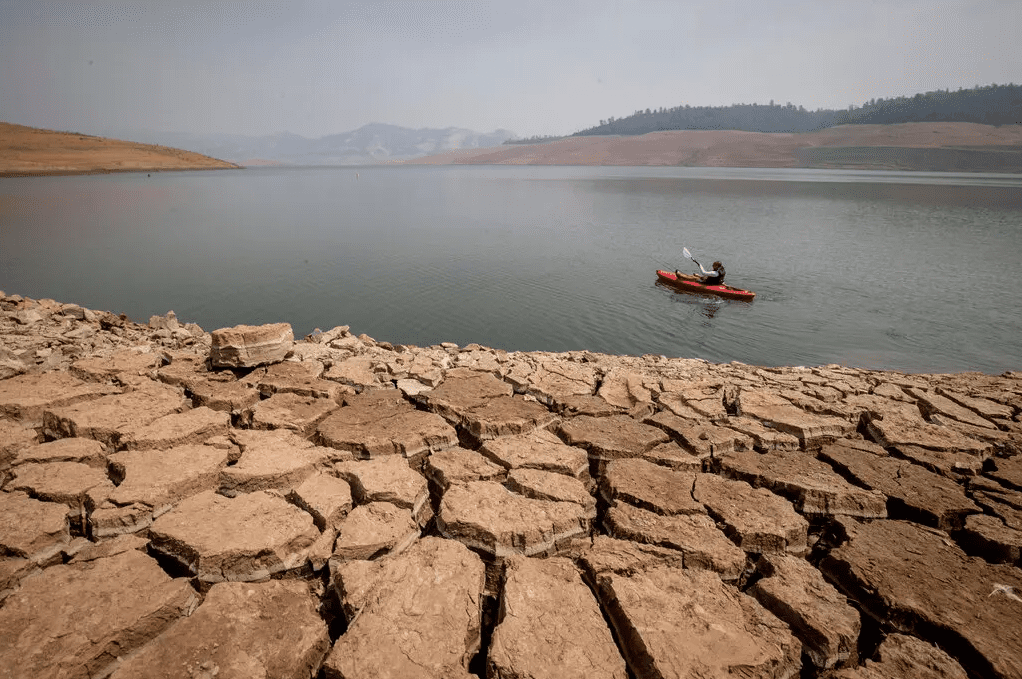Drought in U.S. Is Expected to Persist, and Spread, Through the Spring
Winter precipitation amounts were not enough to significantly improve conditions in much of the country, government scientists said.
Drought conditions are likely to continue across more than half of the continental United States through at least June, straining water supplies and increasing the risk of wildfires, the National Oceanic and Atmospheric Administration said on Thursday.
Nearly 60 percent of the continental United States is experiencing drought, which is the largest part since 2013, NOAA said in issuing its spring outlook, a broad climatic forecast for April, May and June. While these conditions are not new, the agency expects them to worsen and spread in the coming months because of above-average temperatures and below-average precipitation.
That is a turn back in the wrong direction after a winter in which some drought-stricken Western states had seen improvement. And while those states remain in better shape than they were last summer, some states in the Southern Plains are in significantly worse shape.
Jon Gottschalck, the operational branch chief at NOAA’s Climate Prediction Center, said during a call with reporters on Thursday that the few patches of the Southwest and the Southern Plains not already experiencing drought — namely parts of Arizona, Kansas and Texas — were expected to start.
Lake Powell, one of two huge reservoirs on the Colorado River, fell this week to its lowest level since it was created more than 50 years ago with the construction of Glen Canyon Dam. It is getting closer to a threshold that would shut down hydropower production at the dam.
The forecast is also bleak in California, with a majority of the state returning to “severe” or “extreme” drought.
“The snowpack is below average for much of California, and there’s really very little time now to make up any precipitation deficits,” said Brad Pugh, the operational drought lead at the Climate Prediction Center. Coupled with the likelihood of above-normal temperatures, he said, “that would certainly be a favorable situation, unfortunately, for severe drought there in Northern and Central California through the summer.”
In the Central Valley, the three-year precipitation total is likely to be the lowest since modern record-keeping began in 1922, said Brett Whitin, a hydrologist at NOAA’s California Nevada River Forecast Center.
All of this increases the risk of wildfires, which have become larger and more frequent in recent years. In the United States, a study published this week by researchers at the University of Colorado Boulder found that from 2005 to 2018, fires occurred twice as often in Western states and four times as often in Great Plains states compared with the previous two decades. And globally, the most devastating fires will occur with more regularity as climate change worsens, according to a recent United Nations report.
An underlying factor in the conditions that NOAA expects is La Niña, a climate pattern that developed in 2021 for the second year in a row and is expected to remain in place through the spring. The phenomenon involves changes in sea surface temperatures and air pressure in the equatorial Pacific Ocean, which can affect weather patterns around the world and has specifically contributed to California’s drought.
La Niña and its counterpart, El Niño, are part of a naturally occurring cycle, but climate change may increase their frequency and intensity.
NOAA also issued a spring flooding outlook on Thursday, identifying the highest risk in areas along the Red River, which divides Minnesota and North Dakota. (The forecast identifies only regions that are at risk based on underlying factors like saturated soil from sustained, heavy precipitation; any area can experience sudden flooding from a severe storm.)
Medio: The New York Times
